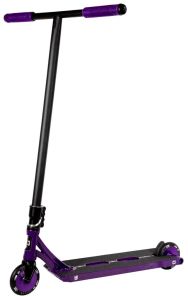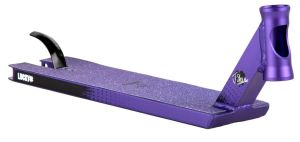Kompressorid
COMPRESSION SYSTEMS
If you want to learn something about compression systems, first of all you have to be willing to do a now almost forgotten activity - reading.
The function of a compression system is the compression of the headset. Hence the name compression system.
For a description of the different types of compression systems see here:
The compression system is very important, it has a noticeable effect on the overall performance of the scooter.
Compression systems can be split into two broad categories, threaded compression systems and threadless compression systems.
A MORE DETAILED BREAKDOWN IS AS FOLLOWS
Compression system No. 1: Threaded fork + clamp (threaded system)
This is the oldest and most basic compression system used for basic entry-level scooters.
For children, this system is adequate. However, it requires regular maintenance on the part of the parents, as it needs tightening very often.
It is also the only compression system that uses a threaded fork. All other compression systems use threadless forks.
Compression system No. 2: ICS + clamp (threadless system)
What does the ICS look like?
Long ICS
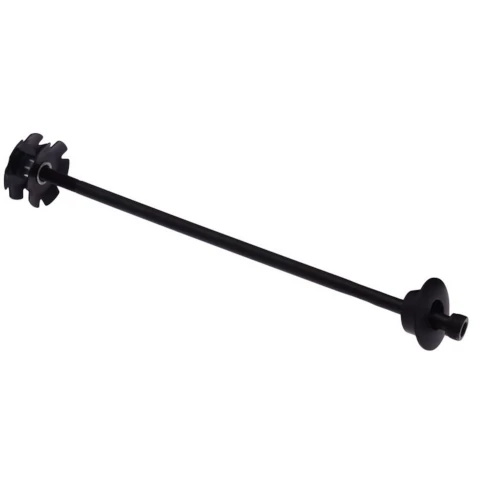
and short ICS:
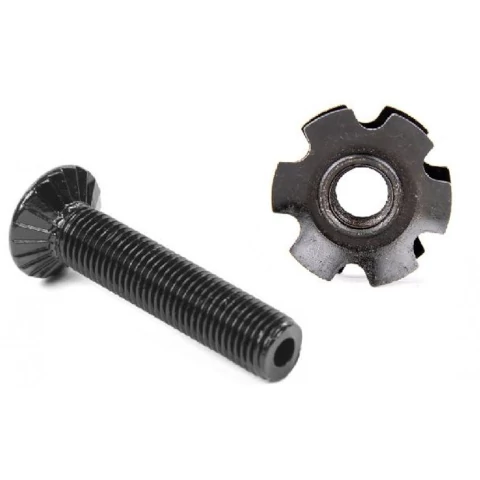
Historically the most widely used compression system. Nowadays almost superseded by more efficient compression systems, namely SCS, IHC or HIC.
ICS is de facto, a long or short bolt with a steel starnut. The starnut is positioned inside the handlebars.
What is the principle of ICS? The starnut "bites" into the inside of the handlebar tube and acts as a fixing point into which the long bolt can be screwed. This creates the fork-to-handlebar connection.
However, a problem arises with steel handlebars. The reason is obvious. The steel starnut is difficult to fix securely on the inside of steel handlebars and tends to slide down. This results in a disruption of the strong bond between the fork and the handlebar.
The only exception is the ICS system from the well-known manufacturer Ethic. This system is perfectly functional because the starnut comes welded on the inside of the handlebar. However, this compression system only works within the Ethic product family.
The standard ICS system can therefore only be recommended for aluminium handlebars.
For the ICS compression system to work properly 1) the handlebars must have a slit at the lower end of the tube and 2) the outer diameter of the handlebar tube must be 31.8 mm for steel handlebars and 34.9 mm for aluminιum handlebars.
The length of the fork tube protruding from the headset must be longer than the slit on the handlebars. A common slit is 3,5 cm long. The length of the fork tube protruding from the headset should thus be a minimum of 4,5 cm to ensure that the slit is sufficiently reinforced by the fork tube and that the handlebar does not snap in the area of the slit. If the slit is longer, the fork tube must also be longer.
The ICS compression system is not compatible with HIC/oversized handlebars, which are made of steel and have an inner diameter of 31.8 mm.
You can see the installation of the ICS compression system in the following video:
Compression system #3: HIC + clamp (threadless system)
This is the HIC compression system
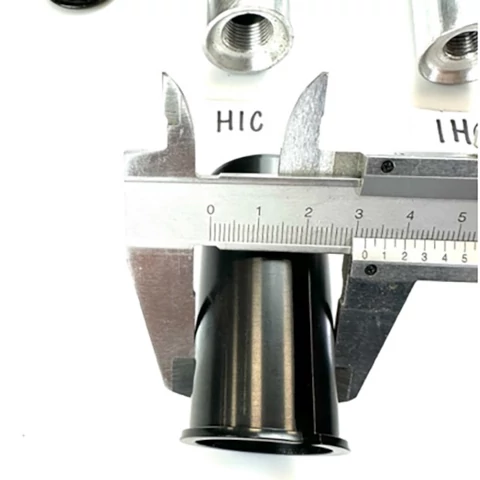
This compression system is only compatible with handlebars that have an inner diameter of 31.8 mm and an outer diameter of 34.9 mm.
If you do not have such handlebars, you cannot use the HIC compression system.
You can see what the HIC system looks like, how it works and how it can be installed in the following video:
A definite advantage of the HIC system over the ICS system is the solidity of the *fork-to- handlebar* connection. The connection is permanently firm and does not tend to work loose.
Snadná je rovněž demontáž a montáž řidítek. Povolíte objímku a dáte dolů řídítka. Hlavové složení zůstává smontované.
It is also easy to remove and reinstall the handlebars. You loosen the clamp and take the handlebars off. The headset remains assembled.
The fork tube must protrude at least 4 cm from the headset, but must not be longer than the HIC system itself. If you get tired of the HIC system over time, you can switch to the SCS system. Either remove the slit on the handlebar or insert a steel insert inside the handlebar to eliminate the slit function.
Compression system #4: IHC + clamp (threadless system)
What does the IHC look like? Same as the HIC, only smaller in diameter.
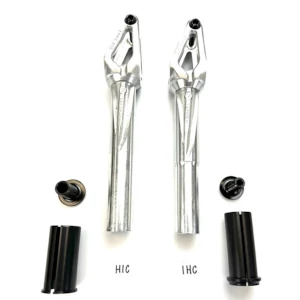
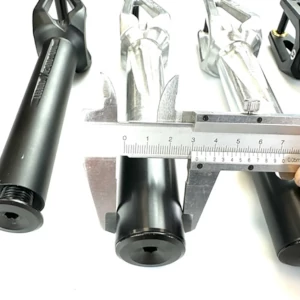
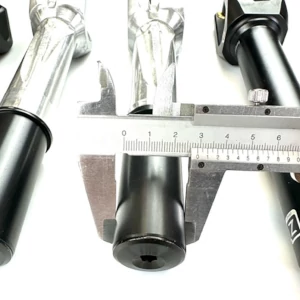
IHC is the most widely used compression system today.
This compression system is compatible with the following handlebars:
a) Steel handlebars, outer diameter of 31.8 mm, handlebars have a slit at the lower end of the tube.
b) Aluminium handlebars, outer diameter of 34.9 mm, handlebars have a slit at the lower end of the tube.
The IHC system differs from the HIC system in that it can be used on handlebars that have a standard inner diameter.
A definite advantage of the IHC system over the ICS system is the solidity of the *fork-to-handlebar* connection. The connection is permanently firm and does not tend to work loose.
It is also easy to remove and reinstall the handlebars. You loosen the clamp and take the handlebars off. The headset remains assembled.
The fork tube must protrude at least 4 cm from the headset, but must not be longer than the IHC system itself.
We do not recommend combining the IHC system with another compression system such as SCS or ICS.
The IHC system only comes with IHC forks. The IHC system can only be used on forks with a smaller tube diameter. This varies slightly from manufacturer to manufacturer but is approximately 25 mm.
Compression system No. 5: SCS (threadless system)
What does the SCS look like? .
The SCS is, in our opinion, the most efficient compression system. It is also the only compression system that eliminates the need for a clamp. SCS is a "2 in 1" system, i.e. compression + clamp. In addition, the SCS system is very friendly to the headset bearings.
SCS compression system installation:
Which handlebars are compatible with the SCS system? All. Except slitted handlebars; the slit must be removed or a steel insert must be placed into the handlebar to eliminate its function.
Handlebars used with the SCS compression system must not have a slit!! This is the basic rule to follow.
Most SCSs are compatible with both 31.8 mm (regular) and 34.9 mm (oversized) handlebars. However, please check the individual product information before purchasing one.
SCS clamps usually come with a shim. On regular handlebars with an outer diameter of 31.8 mm the shim is necessary, on oversized handlebars with an outer diameter of 34.9 mm, it is useless.
IT IS ALSO GOOD TO REMEMBER
Using the SCS, positions the handlebars approx. 4 cm higher. So if you buy a 70 cm tall handlebar without the slit, the resulting height will be 74 cm.
If the handlebars have a slit and you decide to remove it (minus approx. 4 cm), you will not lose any of the original handlebar height. However, if you choose not to eliminate the slit by placing a steel insert into the handlebars instead, you will end up gaining an additional 4 cm of handlebar height.
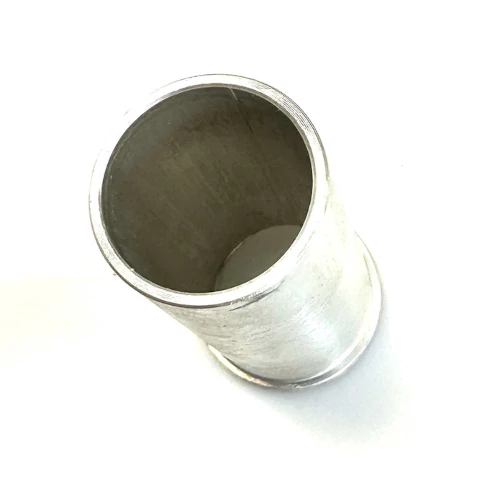
Why would someone use the HIC compression system instead of the SCS compression system? The argument is mostly weight and price. The HIC compression system + clamp usually weighs less than the SCS itself.
However, the life of the SCS is much longer than the life of the clamp.
In addition, the SCS is friendly to the headset bearings.


